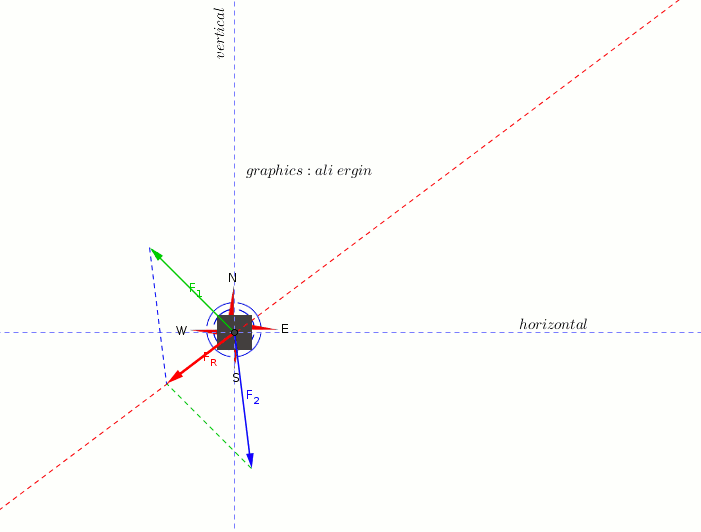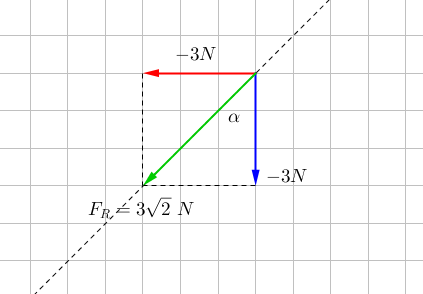
#F_1=<-4N,5N>#
#F_(1x)=-4N#
#F_(1y)=5N#
#F_2=<1N,-8N>#
#F_(2x)=1N#
#F_(2y)=-8N#
#"The vectorial sum of the horizontal components :"#
#Sigma vec F_x=vec F_(1x)+vec F_(2x)#
#Sigma vec F_x=-4+1=-3N#
#"The vectorial sum of the vertical components :"#
#Sigma vec F_y=vec F_(1y)+vec F_(2y)#
#Sigma vec F_y=5-8=-3N#
#"The magnitude of the resultant Force :"#
#F_R=sqrt(Sigma vec F_x+Sigma vec F_y)#
#F_R=sqrt((-3)^2+(-3)^2)#
#F_R=sqrt(9+9)#
#F_R=3sqrt2" N"#
#"You can use the Newton's second law to calculate acceleration"#
#vec a:"acceleration"#
#m:"mass"#
#vec F_R:"Force"#
#vec a=vec F_R/m#
#vec a=(3 sqrt(2))/4 " "m/s^2#
#"Direction :"#

#tan alpha=(-3)/(-3)=1#
#alpha=180+45=225 ^o " with positive x direction"#



